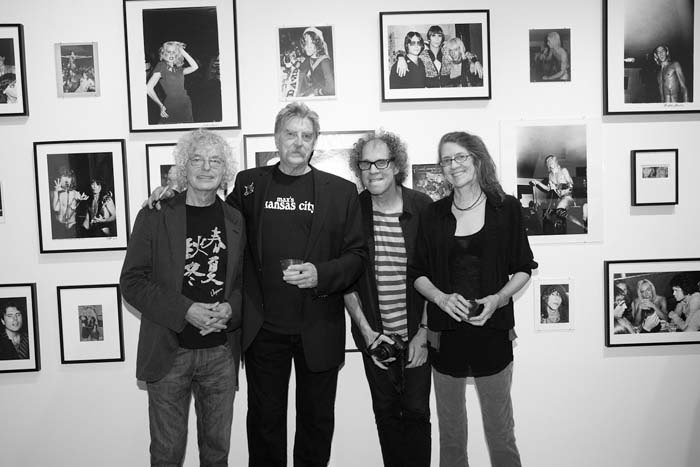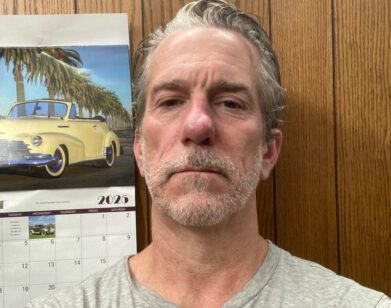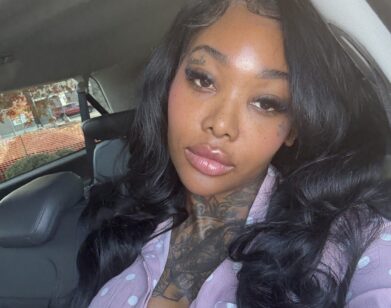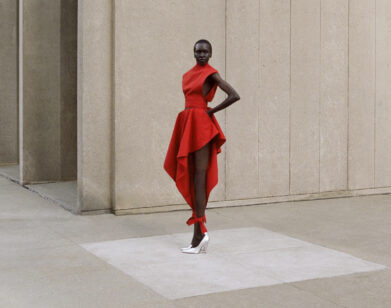Not in Kansas Anymore

More than an art dealer, Steven Kasher is an innovative voice in our ongoing cultural understanding of this world of pictures we now inhabit. A champion of vernacular photography, Kasher has, through numerous books and exhibitions, treated us over the years to scholarly and poetic surveys of the civil rights movement, the outtakes from Warhol’s seminal Exposure series, police mugshots, early tintypes, and such outré lensmen as rural Arkansas documenter Disfarmer, Direct Cinema pioneer Albert Maysles, and photographer-turned-therapist and radical Chauncey Hare. Now, with a phenomenally new show and book (Max’s Kansas City: Art, Glamour, Rock and Roll) about the glory days of New York’s legendary watering hole, Max’s Kansas City, Kasher has invoked the elusive specter of the seminal downtown art scene of the ’60s and ’70s. We caught up with the maestro to talk about Max’s and, perhaps more importantly, how to look at pictures.
CARLO MCCORMICK: I’ve always kind of thought of you as someone immensely knowledgeable about pictures. With this Max’s Kansas City show, I’m remembering that you were also raised in New York.
STEVEN KASHER: I first heard of Max’s from a girlfriend of mine in junior high school. I met her on this great peace march. I think it was the moratorium in ’69, in Washington, but I spied her out on the subway-we used to ride the same subway line every day–and I had a big crush on her. Her name was Ivy. I met her on this peace march, and we got together, and she used to tell me stories of Max’s. Ivy was 16 at the time; I was probably 14. And I would hear these stories, and I would think: “That’s amazing, but I’m not cool enough for that.” I mean, I’m not gonna go out drinking at 14, and hanging out with these folk, in 1969, which was really the heyday of Max’s more or less. So, I’ve always known about Max’s. Since that I’ve met so many people who were the core there–Lou [Reed] and Danny [Fields], Anton [Perich], Frosty [Myers], and through this project, even more–like John Chamberlain. And I had met Mickey several times, but I never stepped foot into Max’s, to my knowledge.
I was a ’60s guy. I loved the Fillmore East. It was never the same to me after that. I loved Hendrix, Motown. I saw Cream, the first time they performed in New York, I think. Café Wah. The coffee tables were feet away from them, and you had Ginger Baker banging away–that was my music.
MCCORMICK: You missed out on punk.
KASHER: I actually didn’t like it. I liked the Ramones, I liked Patti Smith, but that was as far as I went.
MCCORMICK: One thing that is often forgotten, because everyone always thinks of the Warhol time there, or later the Punk bands, was that Max’s was also very much a music industry hang out in the 1960s.
ANTON PERICH, FROSTY MYERS, DAVID GODLIS, EBERT ROBERTS
KASHER: And Danny was the center of that, I would imagine. The picture in the show that Elliot Landy took of Janis Joplin, with Tim Buckley, Warhol, and Paul Morrissey, sitting at one of the back tables–that was the opening night of the Fillmore East. I think Tim Buckley opened for Big Brother. And Landy was so stoned that he shot the roll twice, so the whole roll is double-exposed. That picture is really one of the most interesting pictures at Max’s, because it brings together these worlds in a very clear way. He’s retouched that famous image, so that it looks like it is just smoke in the air. But if you see other images–and he printed another one for the show–the second one of Janis and Warhol has really visibly superimposed the head of the bass player for Big Brother.
MCCORMICK: What was the most outrageous story you came across while you were putting together this exhibition and book?
KASHER: The story Danny tells of Jim Morrison getting completely pissed, and barely sitting up at the table, and then pissing into the wine bottle. But the end of that story is he gave it to the waitress, and said, “We didn’t finish this, why don’t you take it home?” And she did. It doesn’t get much more outrageous than that. And of course that leads to the stories of Morrison and Edie Sedgwick going insane in California.
I was just in Gwangju for the Biennial, a spectacular show on the theme of imagery, which is really what we do here in the gallery. There were three open Warhol time capsules devoted to Warhol’s mom, specifically, and other family members. They go back to childhood stuff… they’re laid out in three big vitrines…and somehow my wife and I spied this little note that said Max’s on it: “Dear John, you can find us at Max’s. Viva and Gerard.” And what that was the night that Warhol was shot. Maybe they all convened at Max’s, I’m not really sure. But it was after the shooting that Andy stopped hanging out there.
MCCORMICK: Because there are so many stories of Max’s–the macho artist bar, the freaky Factory era back room and the amazing rock club–you want to tell them all, but how then did you weave a story out of it?
KASHER: Well, in both the book and the show, there is a narrative that tries to express those different chapters. Of course, I’m simplifying. But the first chapter is Mickey [Ruskin, Max’s owner] and the hardcore group of artist friends–painters, Neil Williams, Larry Zocks, Larry Poons, sculptors, John Chamberlain, Larry Bell, Frosty Myers, Donald Judd, Frank Stella- the kind of the inner circle that he knew from earlier bars. And they all show up at Max’s, become the regulars at the front bar, and they’re pretty much all on tabs. Mickey is fronting them drinks and food, and as I understand it, from the very beginning, this group just drew a bigger crowd. From the night Max’s opened, it was jammed, and it never stopped after that. So, it starts as an artist bar.
MCCORMICK: Robert Smithson used to hang out there also.
KASHER: Smithson, Serra, Carl Andre, there are a lot of people from that group of minimalists, late Abstract Expressionists and pop artists. That’s what’s in the firmament of painting and sculpture in that period. Really, they’re there at Max’s. It was the place for them. We started the show and the book with those people. Then you get to a phase where all kinds of people are hanging out. And we really wanted the show variety of notables and everyday people–the fashion that was sported and was developed there. So the artists start mixing up with all these other people. And then, music people start hanging out there, and the Warhol crowd. If you look at the big wall–which is all pictures by Anton–they’re all the artists, and there starts to be all kinds of people hanging out in the club, like Mapplethorpe, Mick Jagger or John Waters, but also the great club kids from that time.
MCCORMICK: I like that it’s not just a paparazzi-celebrity thing. You include the freaks, and the fabulous personas.
KASHER: We did pick the coolest freaks we could for the book. And there are as many great pictures we left out as we put in. I’ve done a lot of books of this nature. The first one, from ’96, is about the Civil Rights Movement photographic history, 1954-68. It has about 150 pictures by about 60 different photographers, and it’s a complete history of the movement. So, what I’m trying to do–and this is the same for Max’s–is show the best pictures, and to tell as much of the story as I can. We want to let the photography do its job documenting Max’s, but also evoke emotionally what was going on in Max’s…
There really weren’t many places where all the worlds met. What was Max’s would be divided among a hundred different places today, and they would all be on Facebook and Twitter and Page Six all the time. That didn’t really happen then. This was a little world, wasn’t a lot of money involved, wasn’t a lot of prestige involved–it was a real scene, for the scene. It wasn’t really for the press.
MCCORMICK: You avoid the typical trappings of nostalgia.
KASHER: It’s not nostalgia–it’s more utopianism. I’m looking at moments where people had a strong belief in transforming the world, that they can do that. It’s not nostalgia–it’s actually trying to bring this into the present as inspiration.
MCCORMICK: How long did you work on the Max’s project?
KASHER: I started about a year ago. I met with the company that bought Max’s logo trademark.
MCCORMICK: They kind of snoozed on that. Every kid’s got a CBGBs shirt, but Max’s never branded properly…
KASHER: People ask me if there’ll be another Max’s. And I say absolutely, when the world is changing to the extent it changed in the 60s. One of the things about Max’s is this transition from different levels of cool. What was cool then? It was James Dean, Marlon Brando, Miles Davis. What was cool when Max’s ended? It was Lou Reed, it’s Iggy, Janis Joplin…
MCCORMICK: But one of the provocative images in the show–Jackie Curtis as James Dean. That was wild. Full on.
KASHER: There’s a flow in the show and the book where it goes from macho, to much more transsexual and different kinds of sexuality. It’s about the collisions of those two worlds. The front room used to call the back room people “the freaks,” but then they used to get it on! And to me, the great illustration of Max’s is the movie that John Chamberlain made, starring Taylor Meade. Chamberlain, the ultimate macho guy, gets together with Taylor, Warhol, Ultraviolet, to make these avant-garde films.






